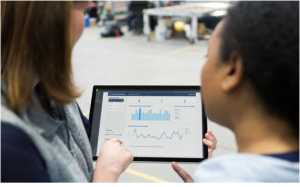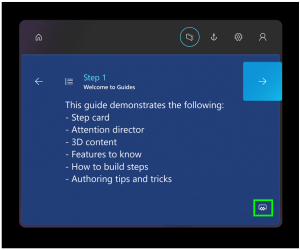4 beneficial Microsoft Dynamics 365 Guides features
Microsoft Dynamics 365 Guides is an exceptional application for self-paced instruction. Its uses span from training sessions to routine maintenance and a checklist system that filters out simple issues before they escalate and require the attention of valuable subject matter experts. The Microsoft development team has provided us with an extensive list of features, some of which you may be unfamiliar with. Here are some beneficial Microsoft Dynamics 365 Guides features:
Tenant Lockdown
The Microsoft Dynamics 365 Guides’ tenant lockdown feature functions as a security system for Guides. When a Guide is still in development and not yet ready for training or designed for a specific department, the tenant lockdown feature comes into play. This feature prevents scenarios where the training department accidentally uses a manager’s checklist for troubleshooting, reducing the risk of users accessing the wrong guide. Additionally, the tenant lockdown feature can be utilized based on different security levels. Guides classified for different security levels, such as managers or subject matter experts, can be set up.

Guides Author Sessions Authoring History
In a manner similar to how Guides records data on operators, authors are also tracked using Microsoft Power BI. Data such as when an author opens a session, their navigation patterns, and when they close a guide are all displayed in the guide author session table. This data provides companies with more insights into how long it takes to build a guide, enabling them to plan accordingly by estimating the authoring hours required to complete the guide.

Custom 3D Parts
3D models and holograms play a crucial role in Guides and Mixed Reality. The inclusion of a custom 3D model expands the possibilities of what can be achieved. While Guides offers a selection of pre-built holograms such as hands and arrows, the addition of a custom 3D model transforms a standard guide into a powerful simulation. Users can navigate through a digital twin and, for instance, examine a car using an x-ray-like vision. In cases where physical machinery is limited or unique scenarios arise due to size and weight constraints, a 3D model serves as a valuable alternative. Companies often possess CAD models from the initial design phase or can obtain them from suppliers. Converting the CAD model to a 3D model and optimizing it for Guides usage is all that’s required.

Add a website link/power apps
Lastly, authors have the ability to incorporate website links or power apps within a Guides step card. A website link might lead users to additional information about the machine or part they are working on, or enable them to order a new part. Alternatively, authors can integrate a link to a power app that provides a wide range of functionalities. Power apps can be utilized to collect images for instructors to validate whether a machine was assembled correctly and trainees are prepared for real-world scenarios. Moreover, power apps can be applied to product quality control and even COVID-19 screening.


